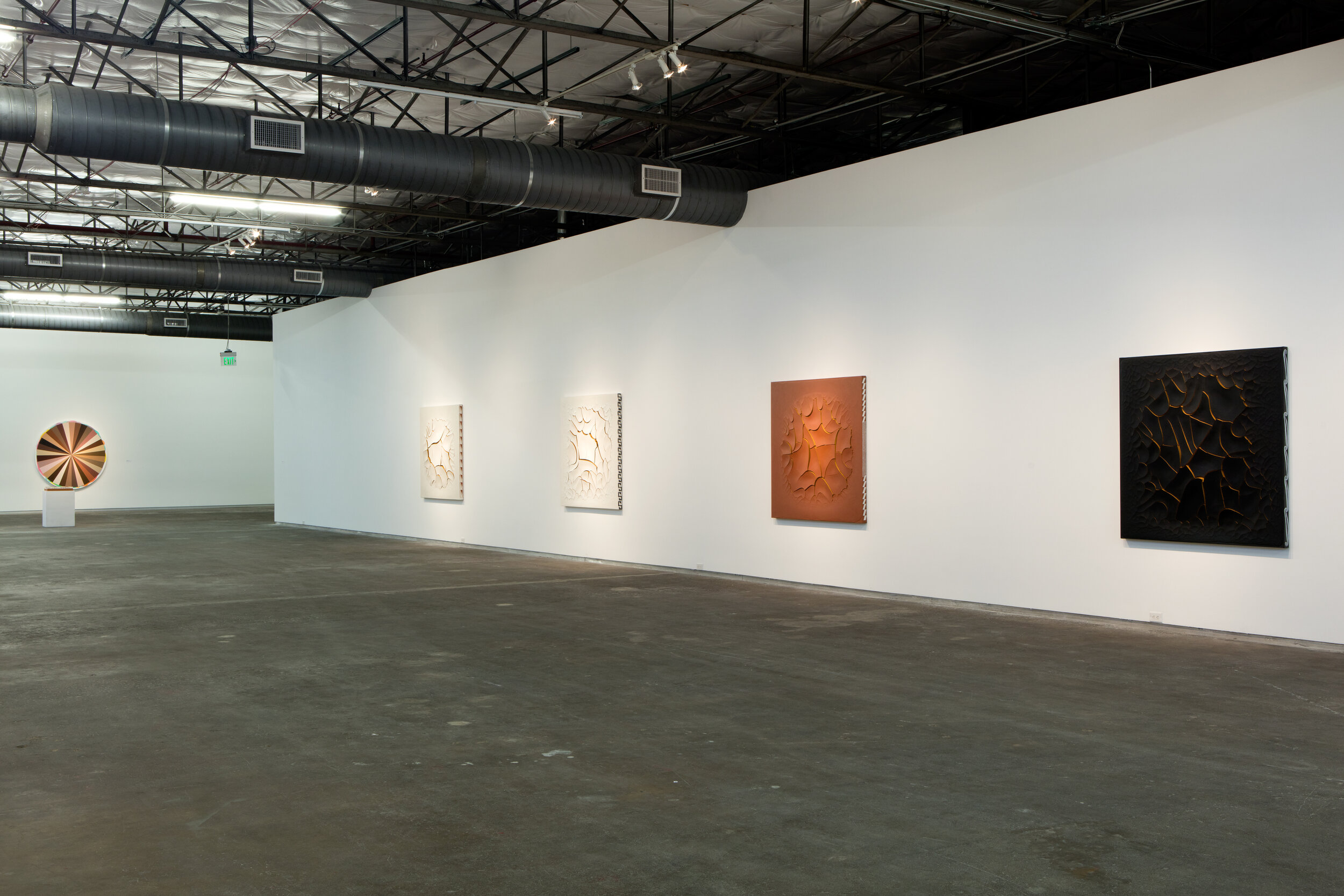Adriana Varejão
Kindred Spirits
Dallas Contemporary
20 September – 20 December 2015
The exhibit with Adriana Varejão stands out because working with her at Dallas Contemporary reminded me of the pleasure of working with an artist on a museum exhibition. For several years and particularly in 2015, the bulk of my work had focused on public art. This was a treasured opportunity to work with an established figure whose work I had admired since we met in Rio de Janeiro in 1992. The primary ideas for the exhibition coalesced in November 2014 when she attended her opening at the ICA Boston, curated by Anna Stothart. A visit to the MFA Boston with then curator of American Art, Dennis Carr lead to our mutual discovery of Mimbres pottery. This was followed by a trip to Dallas for a site visit and further research into Native American face painting traditions in Fort Worth at the Sid Richardson Museum and the Amon Carter Museum of American Art. The research resulted in two new bodies of work for the exhibition, Kindred Spirits. Below is a revised wall text from the exhibition at Dallas Contemporary.
Kindred Spirits presents three bodies of work by the Brazilian artist Adriana Varejão, whose work is informed by cultural and historic research. The themes and ideas are founded on an intense investigation into disparate fields such as art history, anthropology, colonial trade, demography, and racial identity.
The series of twenty-nine self-portraits, Kindred Spirits, are named after a book that looks at the influence of Native American art on the work of 20th Century artists. Varejão’s paintings highlight the formal similarities and simultaneous distance between various artistic traditions and styles. Seen together, even the origins of the most obvious references are blurred and distinctions between supposedly “high” and “low” are called into question. The viewer may easily mistake a reference to Sol LeWitt with 12th century Mimbres pottery design. Verajão’s practice questions the idea of purity and reminds us that humanity and culture are constantly evolving through the exchange of ideas.
The color wheels are a continuation of Polvo, which began in 2013 as an investigation into Brazil’s racial identity based on the open question, “What is your skin color?” This question was posed in the 1976 Brazilian census, and answers included terms such as Café con Leite (Coffee with Milk), Pouco Clara (Not so White) and Quemada de Sol (Sun Kissed), reflecting a complex notion of self-identity, related to abstract concepts of color. In the era of big data, the round paintings resemble demographic pie charts used to depict a fictitious breakdown of race based on fabricated colors. Through this process, the artist further questions the absurd notion of racial purity and corresponding racial miscegenation.
The third component of the exhibition, entitled Mimbres, began with Varejão’s series of cracked paintings based on 11th century Song Dynasty pottery from China. The first series of monochromatic works featured the celadon colors – light green to light blue-emblematic of Chinese pottery. The characteristic cracks, resembling parched earth, were the product of aesthetic experimentation by Chinese master ceramicists who intentionally fired the pottery to the point of distress. Resulting in the highly valued accidental cracks, which run through the pottery. Verajão’s new body of monochromatic crackled works, is inspired by 11th-century Mimbres pottery from what is now the southwestern United States. Mimbres pottery is highly prized because of the sophisticated designs and figuration depicting daily life in the region. The Mimbres crackled paintings, feature earthy colors associated with the Southwest. The edges of Verajão’s paintings are adorned with Mimbres pottery design composed of wavy lines forming scrolls, straight unbounded lines and hachure.
Adjunct Curator: Pedro Alonzo
IG @adrianavarejao / adrianavarejao.net
Photo credits: Kevin Todora






